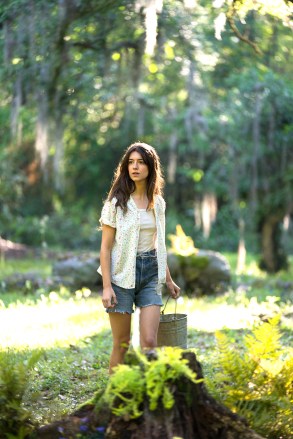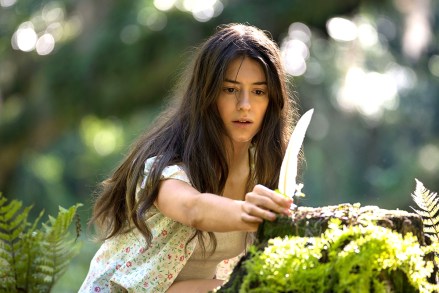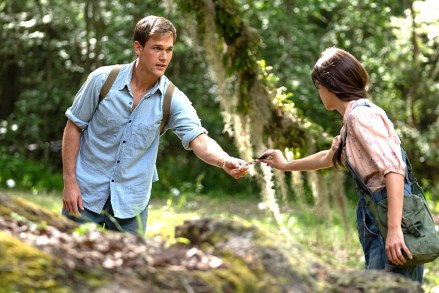
Where The Crawdads Sing, an adaptation of Delia Owens’ bestselling novel, is one of the most highly-anticipated movies of the year. Normal People breakout Daisy Edgar-Jones gives a riveting performance as Kya, a guarded and brave young woman who lives alone in the marshland around Barkley Cove, North Carolina. Kya becomes the prime suspect in a murder case when Chase Andrews ends up dead. The truth about what happened to Chase isn’t revealed until the film and book’s final moments, leaving viewers and readers stunned.
Director Olivia Newman spoke EXCLUSIVELY with HollywoodLife about how “vital” it was to not alter the book’s ending and to keep an element of mystery to Chase’s death. She also discussed the challenges of filming on location and how Taylor Swift’s “Carolina” helped influence the film. Read our Q&A below:

Had you read Where The Crawdads Sing prior to directing the film?
Olivia Newman: It’s kind of a funny story. I had heard Delia interviewed talking about the book, and I remember listening to the interview and just thinking, “Oh my God, that sounds exactly my kind of book. I have to get a hold of it.” At the end of the interview, they mentioned that Reese [Witherspoon] was adapting it into a movie and I thought, “I don’t want to read it because I’m going to be so heartbroken that I don’t get to make it.” Whenever I’m reading I’m thinking about, can I adapt this? I don’t remember exactly when that was, but it was on my bucket list of books to read. And then it was in the spring of 2020, I was meeting with my agents. Everything had been shut down, and we were trying to figure out what I could develop during that time. There was no production going on. My agents brought up that they were looking for a director for this adaptation of Where The Crawdads Sing. I said, “Oh my God, I’ve been meaning to read that book. Let me get a hold of it.” My agent said, “Well, just read the first 30 pages of the script and see if you’re interested.” About halfway through the book I said, “Are you kidding me? I cannot read the first 30 pages. I cannot put this down.” I read the book in about two days. It was even better than I thought it would be when I heard Delia talking about it. It was kind of a punch in the gut. From the first page, it really pulls you in emotionally, and then, of course, there’s the murder mystery. You cannot stop reading because you have to understand how it’s all connected. So I read the book and then I read Lucy [Alibar]’s adaptation. I said, “I really have to direct this.” They got me a meeting with Hello Sunshine and 3000 [Pictures]. We had a couple of meetings, and it felt like my vision for how to adapt it into a movie version of it was very in line with what they were hoping to do, and I was offered the job.
The movie has several timelines and the setting isn’t logistically the easiest. What was the most challenging aspect of directing this adaptation?
Olivia Newman: First of all, during the writing and development of the script, one of the things that I thought would be helpful for the movie version was to be as anchored with Kya as much as possible. I’d say structurally, the big difference between the book and the movie is that we decided we would pull the arrest up early, so that we could follow Kaya in the courtroom throughout the present storyline. Whenever we flashback, we’re then rooting for this young woman and seeing how she survives and understanding how these relationships affect her and how she evolved as an adult, and eventually how she’s connected to this murder. But we wanted to always be with her, whether we were in the present storyline or the past storyline, so that really helped us structurally think about how to tell the story in the movie version.
Shooting on location was an absolute must for telling this story because the landscape is such a part of who Kya is as a character. You can’t get to know Kaya without understanding her relationship to the marsh, her relationship to the swamp, the beach. We had to find all of those locations and really film them in their natural beauty. We looked at all different areas to shoot and ultimately found that we had the most variety of textures in and around New Orleans. We chose a location that we thought really captured the beauty of Kya’s lagoon, and then we built her house on location. We did the same thing for Jumpin. We found a spot that we thought feels sort of in the middle of a passageway where boats would go back and forth and built his shop on location. All of the scenes on the water, of course, they were scouted very specifically for the kind of backdrop that we wanted for each scene. That meant dealing with the elements. Kya’s house flooded almost every afternoon. The tide water would rise, and it would come up halfway up. We’d be shooting a scene in the morning, come back after lunch, and the lawn would be completely underwater. And then the water would recede. We were kind of always dealing with the elements shooting on location. We had crazy weather in New Orleans. We shot there in May and June. there. It was supposed to be a dry month, which was why we had chosen that time of year. Unfortunately, we had an unprecedented amount of rain that May. We had tons of torrential downpours, lightning strikes, and flooding all of our sets to the point where we had to actually shut down for 5 days to wait for the waters to recede. The most challenging part of production was dealing with the weather and the elements and getting out on boats and shooting on boats, but it was absolutely essential for this movie.
The shots on the water and aerial shots were stunning. It feels like you’re there. Was that something that was new to you as a director?
Olivia Newman: It was the first time I had shot on boats. It was the first time I had shot with drones, so all of that was new. But I was working with a team of people who had done it before, so there was a lot of planning and foresight that went into figuring out exactly how we were going to shoot. We looked at footage from other films that had been shot on boats to figure out the kind of movements we wanted with a camera. I had this team around me to support getting that done. The drone shot was really interesting because we actually used a couple of different teams until we found just the right drone operators. With drone shots, you want to block those shots the same way you do with any shot that you’re setting up with a camera. So for me, they needed to not just be sweeping shots that are sort of objective and have no connection emotionally. They had to actually be telling a story emotionally. Even blocking those drone shots, they had very specific movements that we wanted: starting points and end points and very specific kinds of movements. We just worked with a wonderful team to get exactly what we wanted.
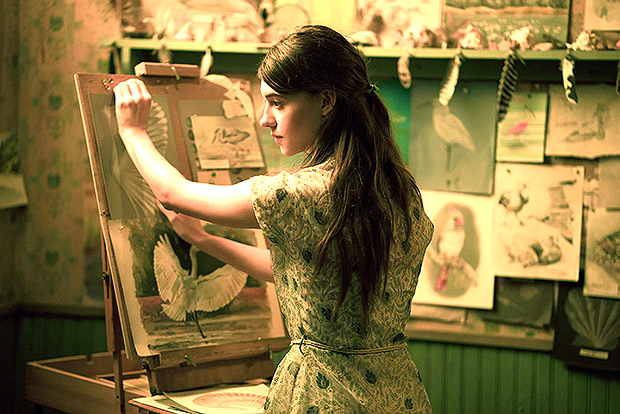
I was stunned by Kya’s drawings in the movie. Who did those?
Olivia Newman: They’re so beautiful. But it was primarily our art director Kirby Feagan. Sue Chan, our production designer, had worked with her before. She was the first person that Sue thought of and her very first hire because she’s an incredible art director but also she knew that she was an amazing artist. She said, “The first thing we need to do is get started on Kya’s drawings because there’s going to be so many of them, and all of those paintings are watercolor paintings, which is how Kya paints in the book.” I just was absolutely stunned by the detail that Kirby is able to get from watercolors. That was something that Kirby was painting from the very first day of prep through the end. We also wanted to show an evolution in Kya’s art, so we did have other artists who did some of her early sketches. One of our our scenics, Grace [Kelsey], is also a wonderful artist, and she did a lot of Kya’s earlier drawing and paintings. Some of the drawings that you see in Kya’s notebook at the end, those are Grace sketching just to show where Kya was at as a teenager versus where she ends up at the end, which is really leaning more into Kirby’s paintings.
We don’t ever see Chase’s death, but book readers know what happened in the end. Was there ever a discussion to show what happened that night in the film?
Olivia Newman: I’m trying to think of how to answer this without spoiling the ending for viewers who haven’t read the book. I guess what I would say, and that’s really important to me because the movie is going to be wonderful for people who have read the book. They’ll get to see the world come to light because they imagined it reading the book, but I think for viewers who haven’t read the book it’s really exciting because the mystery is completely unknown and the ending is completely unknown. I just want to make sure that they get to have that experience. We did talk a lot about the ending, and what’s wonderful about the book is that the ending is a revelation. It kind of tells you more about Kya than you even understood reading it. But it also maintains a bit of mystery around her. As much as we think we know her, there’s a lot about her that’s a bit of an enigma. I wanted to sort of maintain that part of the mystery around her that was evident in the book and let the viewer try to grapple with the ending the same way you do in the book, where you really have to think about it and wonder how it all happened.
The only people that know what really happened that night are Kya and Chase. It’s a secret she kept with her. Like many things in life, the truth is only known to certain people.
Olivia Newman: At the end of the book, I just remember feeling like, “Oh my God, even I underestimated her.” You think you know her so well, and you’d think she’s only capable of so much. In the book you realize, my goodness, even I didn’t quite understand how much a part of the wild she was. She’s this amazing character where she’s not completely feral. She was raised by a family that loved her, a mother that loved her to a certain age. She did have these really important relationships with Mabel and Jumpin and Tate. There’s a certain amount of socialization that she experiences, so she’s not completely like a wild animal. And yet she spends so much time in nature alone, observing the way species survive, and she really takes more lessons from the laws of nature than from the laws of society. At the time, the laws are completely unjust, and they don’t really look out for people in an equal way. You realize the ending kind of tells that. Kya was playing by the laws of nature. She was not engaged in the laws of society, which I think is just fascinating.
It feels very indicative of her whole mentality. There’s always been a very primal aspect to Kya.
Olivia Newman: She says in the movie, “There is no dark side to nature, just inventive ways to endure against all odds.” And that’s truly how she feels, so it was absolutely vital that we maintain the same ending as the book because that is a story. Without it, you don’t have a story.
When were you aware that Taylor Swift wanted to write a song for the film, and how did you react when you first heard “Carolina”?
Olivia Newman: I mean, it’s another crazy story because it was one of the first things I learned when I was hired. We weren’t anywhere close to shooting, and I was told that she loved this book so much. She knew that we were adapting it into a film, and she really wanted to write a song for it. As a filmmaker, your instinct is once the film is done, then she can watch it and can write something for the film. But she was so inspired by the book and by the story that the song came to her early. She wrote the song, part of it, and sent it to us before a frame of footage had been shot. Honestly, I was nervous because you don’t know if the song is going to work until the movie is done. But in this case, what was so incredible is that when I listened to the song, I had a very emotional reaction to it. I felt the same way I felt at the end of the book. It put me in that emotional state that the book did when I finished it. I thought, “My God, this is how I want audiences to feel when the movie ends. However we get there. I want them to have this feeling at the end of the movie.” I knew that it was going to be the perfect song to sit and digest what you had just seen and the story as it just unfolded. It was incredible to have the song before we even shot the film because I knew the emotion that I was heading toward as I was making the film. It usually goes the opposite way but her emotional instincts were so perfect.
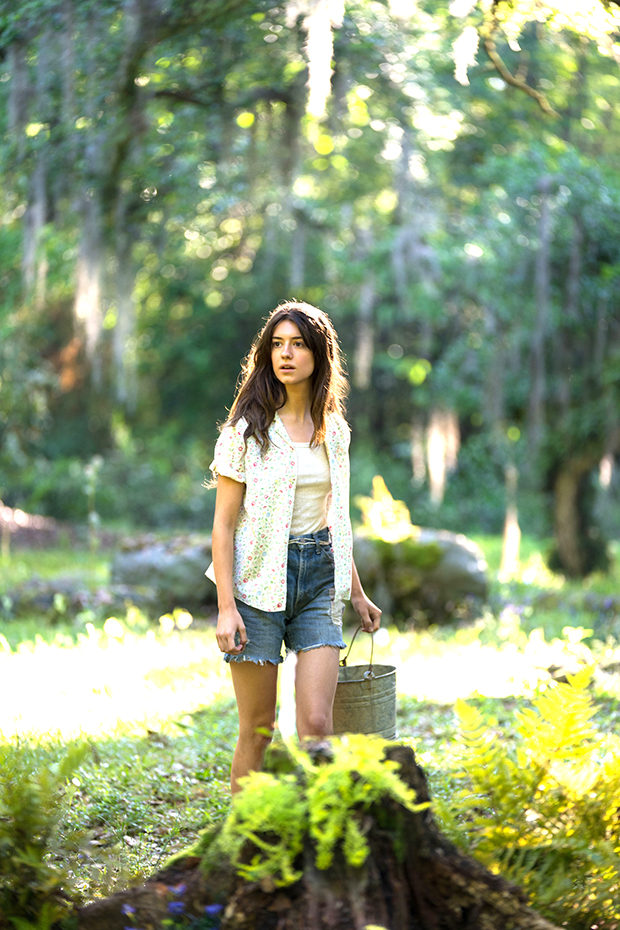
A lot of people are going to discover Daisy with this film. However, I recognized her from Normal People, and she was such a revelation. Was the show the spark that led you all to Daisy?
Olivia Newman: Absolutely. I had watched Normal People like everyone else at the beginning of the pandemic. I just thought, who is this incredible actress? Marianne is a very challenging role, and there’s a lot of Marianne that is unlikable because she’s not an easy person. And yet, Daisy really allowed us to empathize with Marianne and really get inside of her shoes and got across all of that complexity of that character. Even though Marianne is very different than Kya, I thought that if this actress can embody a character like Marianne, I’m sure she would kill it with Kya. When we started talking about actresses for the role, she immediately came to mind. We sent her the book and the script. She had about 48 hours with the material. We had a meeting over Zoom, where we talked for about an hour. I was already in that meeting so blown away by the questions that she was asking and the way that she was thinking about the character and approaching how she might embody Kya. We had an audition session the next day where we worked together. When I audition actors, I always like to hear them read in the notes, have them read again, and just really direct them and see how they take direction. From her very first reading, before I said a word, she had me in tears because she tapped into this incredible vulnerability. But I also could see how you could see that strength and resilience that Kya has. The combination of her amazing audition and in our meeting really had me so excited to work with her and collaborate with her.
What’s so wonderful about Daisy is that she’s so committed to the craft and to the work. She wants to do everything necessary to really embody a character truthfully. She came down to New Orleans about 6 weeks before we started shooting so she could start movements work to help her find the physicality of Kya and help her find that physicality over the course of the movie. Daisy’s role starts when Kya is a teenager and into early adulthood. so she wanted to feel what is it when Kya is young and really kind of nervous and skittish around people, and then when she’s older, she’s a bit more hardened because of her relationship with Tate. She carries herself a bit differently. She’s more aware of her own sexuality in a different way when she’s older. She did movement work. She learned how to ride a boat. She learned how to fish. She really wanted to get her hands dirty and really be in the marsh and experience Kya’s world as much as she could before we started shooting. She did all of her own stunts. She had absolutely no fear. She always wanted to try a stunt before a stunt person, and she always nailed it. All of the stunts in the movie are Daisy.
